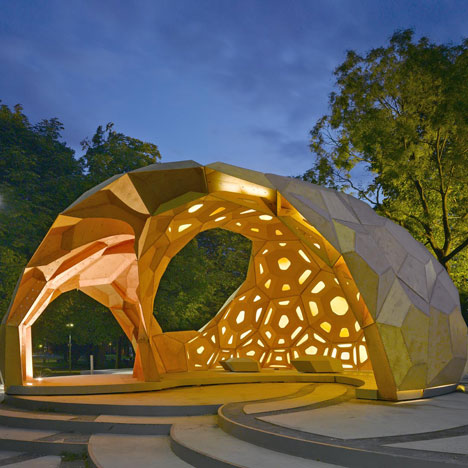Great to virtually meet everyone, my name is Justin. I am majoring in Computer Science with a minor in Management. Art has always had a special place in my heart, drawing, potery, architecture, music, even programming, any form of someone expressing themselves is inspiring. Computational design enables limitless creativity and applications, this versatility is exciting. I am looking forward to learning more about this facet of computer science.
A project that piqued my interest was robotic fabrication in timber construction. Researchers at the University of Stuttgart have combined robot prefabrication, computational design, simulation processes, and surveying to create lightweight timber structures. This not only enables unique designs, but also practical applications outside of architecture.
https://phys.org/news/2013-09-robotic-fabrication-timber.html

Collaborators on this project are Kuka, a manufacturer of industrial arms, and MullerBlaustein, timber constructors. The participants investigate the potentials of robotic prefabrication in timber construction with an overall goal of developing innovative, performative, and sustainable construction systems. Researchers will assess different techniques in geometry modeling, structural analysis, and efficient fabrication processes. The outcome of this research will offer more manufacturing possibilities and development freedom.
The Research Pavilion prototype above was developed in the summer of 2011. University of Stuttgart’s Institute for Computational Design and Institute of Building Structures and Structural Design worked together to develop this pavillion created out of thin plywood using robotics. It demonstrated the potentials of robotic fabrication in timber construction.
I find this compelling for a couple reasons. For centuries, woodworking and wood structures have remained the same. This research greatly expands the possibilities for wood as a building material. It offers more creative solutions, expressions, and the creation of recycled wood products. Who knows, maybe one day the techniques developed from this research will become common practice.
Hey Justin! This looks amazing. It’s fascinating that something as old as woodworking can still be transformed by the vast amount of innovation technology brings. Computational fabrication seems to offer many benefits, based on the research you’ve done. Hopefully, things like this will become more practical in the long run!
Hey Justin, I totally have the same passion for creativity and art as you and I definitely agree that even programming is an art form essentially and requires a lot of creativity as well as technical knowledge and skills and I have always liked that about computer science as well. This project you have attached is really interesting as well, I find it really cool and it seems to be that this type of unique timber fabrication likely wouldn’t be possible if it wasn’t for this type of computing and robotic research.